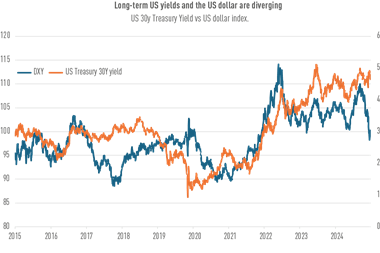Eurekahedge estimates the total size of the Asian hedge fund universe at about $160 billion as of the end of 2007. Apart from Japanese funds, which posted poor performance and endured significant outflows two years in a row, Asian funds grew as a result of both liquidity inflows and double-digit annual returns. In this respect, it should be noted that, whatever the underlying strategy, Asia-focused hedge funds regularly outperformed their foreign peers until late 2007, as shown by a comparison of the excess returns of the Eurekahedge Asian indices and those of the EDHEC global composite indices (all regions included).
Unfortunately, rising investor risk-aversion in the wake of the US financial crisis brought this exceptional series of returns to an end in 2008. This drop in mid-year results is cause for concern, as many Asian hedge funds substantially underperformed their peers over the period, in contrast to previous years.
his is particularly true for the largest segment of the Asian alternative universe, the L/S equity strategies that account for almost 60% of the assets under management and are for that reason a key driver of the hedge fund industry in the region.
Asian L/S equity strategies were hurt by the sharp trend reversal, especially because many hedge fund managers maintained a net long bias in spite of severe market corrections.
The result is hardly surprising, as stock borrowing is generally more difficult and expensive in Asia than in the United States and the permanent credit squeeze does not help matters. Furthermore, some hedge fund managers still have a learning curve inherited from their previous jobs in long-only asset management houses and are not yet experienced short sellers. They can perform in bull markets but have recently been powerless against a plunge in stock prices.
As Asian stock markets nosedived in the first half of 2008, L/S equity portfolios logically suffered heavy losses. Interestingly, their year-to-date average performance is almost comparable to that posted by long-only portfolios and far below that exhibited by the L/S equity fund industry in the rest of the world (YTD excess return of the Eurekahedge Asian L/S Equity index to the EDHEC L/S equity composite index as of late June 2008: -783bp). This result contrasts sharply with those observed over the last seven years and cannot but give global allocators cold feet, especially as the Asian L/S equity funds’ drawdown is likely to continue in Q3 2008.
In choppy markets, investors are always more inclined to cut their positions in funds experiencing peak-to-valley drawdowns. Consequently, we may well wonder whether some investors are now tempted to move away from Asia-focused L/S equity funds. So far, it seems that the region has not witnessed significant outflows, although the situation is different from one country to another; Japan is apparently continuing to face strong asset decline. On the other hand, the poor performance of L/S equity funds, combined with the backdrop of an asset reallocation (from country-focused strategies to more diversified mandates or from L/S equity strategies to multi-strategy mandates) in an attempt to mitigate risk, will first affect the earnings of firms that have not reached a critical size. This is all the more worrying as investors are more and more demanding when it comes to risk management, reporting, and compliance. All these inherent infrastructure costs are becoming insurmountable barriers for a number of firms, precisely those whose assets under management are insufficient. It comes as no surprise then that the small size of many funds has a detrimental effect on their performance. Medium-sized funds ($50 million < AUM < $250 million), for example, tend to outperform small-sized funds (AUM < $50 million, i.e., more than one in four Asian hedge funds) in both bull and bear markets, as evidenced by the excess return of the Eurekahedge Medium Asian Hedge Fund Index to the Eurekahedge Small Asian Hedge Fund Index: +692bp in 2006, +578bp in 2007, +233bp as of the end of June 2008.
In an overcrowded space as is the case in Asia today, it is highly likely that the hedge fund attrition rate will skyrocket in 2008 and that industry concentration will accelerate accordingly.
However, every cloud has a silver lining. The industry shake-out should strengthen the surviving funds and make them more profitable in the long run. They will be able to take advantage of the opportunities emerging in the Asia-Pacific region and as a result attract capital again. Simultaneously, the other hedge fund strategies, such as global macro, relative value and event-driven strategies, still underweighted, might take on increased importance, as they should offer growing capacity and attractive expected returns.



























No comments yet